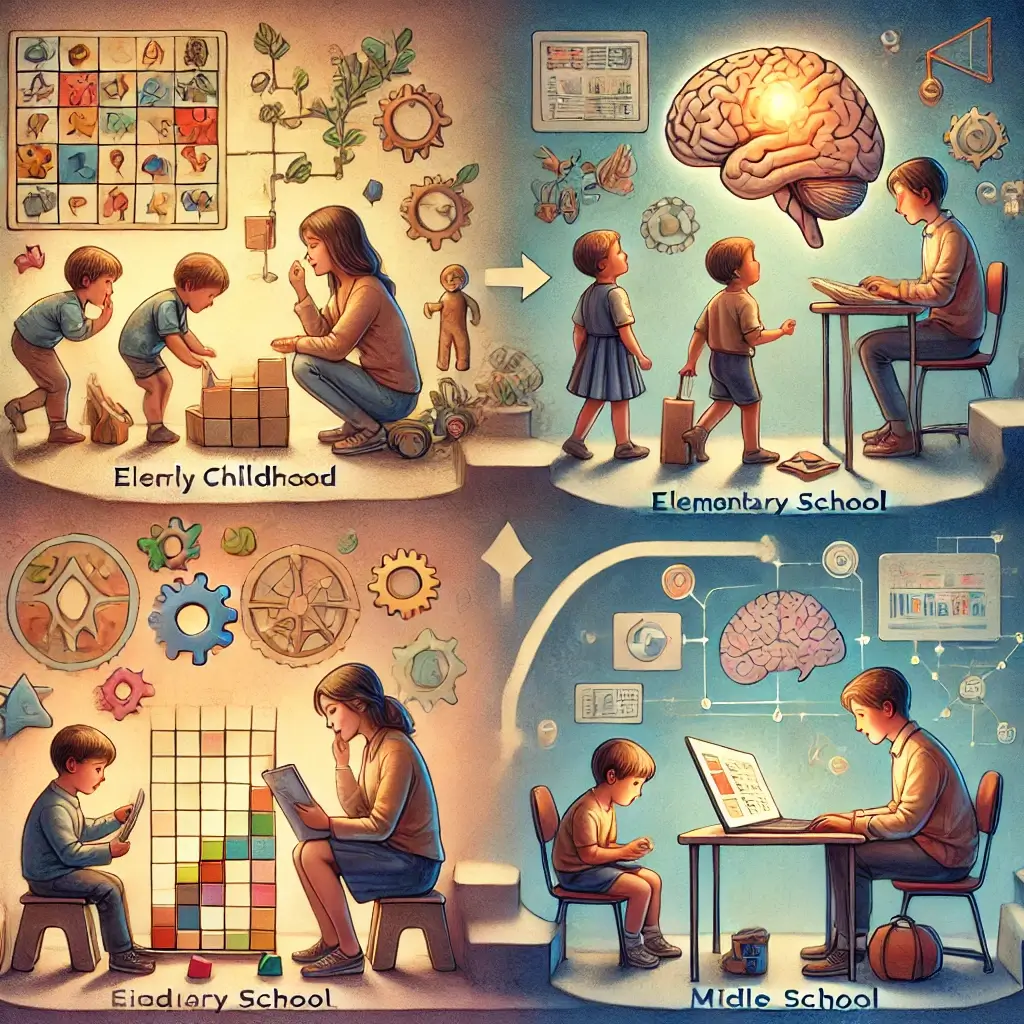Sensory Processing Challenges for Children with ASD
Children with Autism Spectrum Disorder (ASD) frequently have sensory processing issues. This means their brains process information from their senses (sight, hearing, touch, taste, smell, and even movement) differently than normal brains. These changes can result in several reactions, including:
Children can be highly sensitive to specific sights, noises, sensations, tastes, or smells. For example, a youngster may find loud noises intolerable, be distressed by bright lights, or dislike the sensation of particular garment textures.
Under-sensitivity: Some youngsters may be less receptive to sensory input. They may not appear to sense pain or temperature changes or seek strong sensory experiences such as loud noises or abrasive textures.
Sensory Seeking: Undersensitive children may actively seek extreme sensory experiences to feel more aware or engaged. This may include rocking back and forth, jumping, or mouthing objects.
The Impact of Sensory Processing Challenges:
These sensory processing issues might appear in various ways. Some children with ASD may be hypersensitive or overly receptive to particular sensory inputs. They may find certain sounds, textures, or lights overwhelming, causing distress or discomfort.
Parents, caregivers, and educators must understand and address sensory differences.
This increased sensitivity can make simple tasks like using a noisy hand dryer or touching certain fabrics incredibly uncomfortable or even painful for them.
Other children with ASD, on the other hand, maybe hypersensitive or under-responsive to specific sensory inputs.
Youngsters attempting to meet their sensory needs may seek out powerful sensory experiences, such as deep pressure or loud, vivid places, to feel the sensations they need. They may also engage in excessive spinning, rocking, or self-injury.
Sensory processing issues can have a significant impact on a child with ASD’s daily life, impairing their ability to engage with their surroundings, communicate with others, and navigate the world around them.
Parents, caregivers, and educators must understand and address sensory differences since they can substantially impact a child’s development, learning, and general well-being.
Recognizing and meeting the particular sensory demands of children with ASD allows us to build more supportive and inclusive environments that promote their growth, learning, and general quality of life.
Sensory processing difficulties can substantially impact a child’s everyday life and well-being. Here are some possible consequences:
Meltdowns and Tantrums: Overstimulation from sensory input can cause meltdowns or tantrums as the youngster tries to cope with the overwhelming sensations.
Sensory sensitivities can make it challenging for children.
Sensory sensitivities can make it challenging for children to participate in social events, particularly those involving noisy environments or close physical contact.
Sensory distractions can make it difficult for youngsters to concentrate in class or accomplish activities.
Sleep Problems: Sensory sensitivities can disturb sleep patterns, making it difficult for youngsters to fall and stay asleep.
Strategies for Helping Children with Sensory Processing Issues:
There is no one-size-fits-all solution. However, the following measures can assist children with ASD in managing their sensory processing challenges:
Sensory Integration Therapy teaches youngsters to interpret and integrate sensory information more efficiently.
Developing a Sensory Diet: A sensory diet offers planned sensory experiences throughout the day to assist in controlling the child’s sensory system. These could include deep-pressure massages, listening to soothing music, or chewing on chewy toys.
Making changes to the surroundings can help alleviate sensory overload. This could include utilizing noise-cancelling headphones, dimming the lights, or offering fidget toys for tactile input.
Social Skills Training: Teaching children social communication skills will help them express their sensory demands to others and avoid potentially overwhelming circumstances.
Importance of sensory integration in children with ASD.
We can assist children with ASD in understanding and managing their sensory experiences, improving their overall well-being and engagement in daily life. Sensory integration can assist them.
Feel calmer and more regulated: Children who properly manage sensory input are less likely to have meltdowns or feel overwhelmed.
Focus and learn more effectively: Eliminating sensory distractions might help a youngster concentrate and participate in school activities.
Develop social skills: When youngsters are comfortable in their surroundings, they are more likely to interact with others and form social bonds.
Remember that sensory processing problems are a prevalent feature of ASD. Children with ASD can thrive and realize their full potential if they are understood, supported, and taught appropriate methods.













